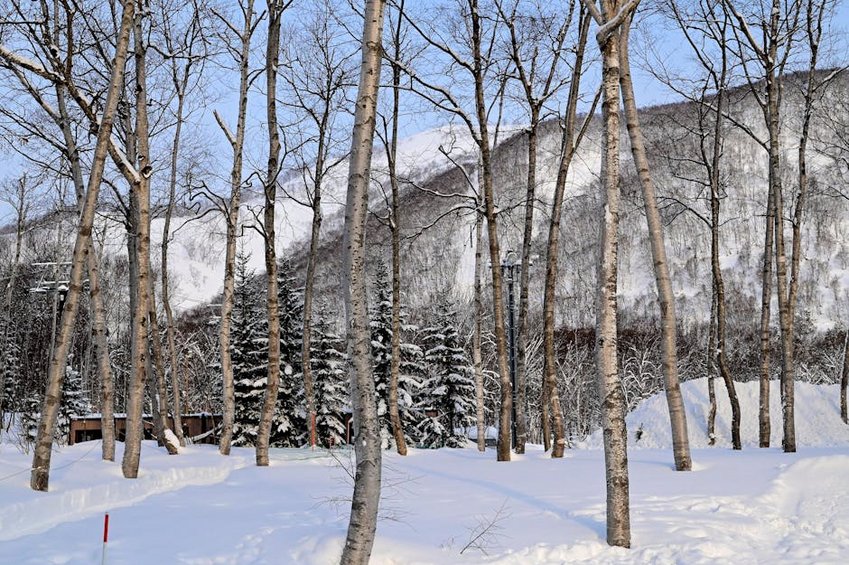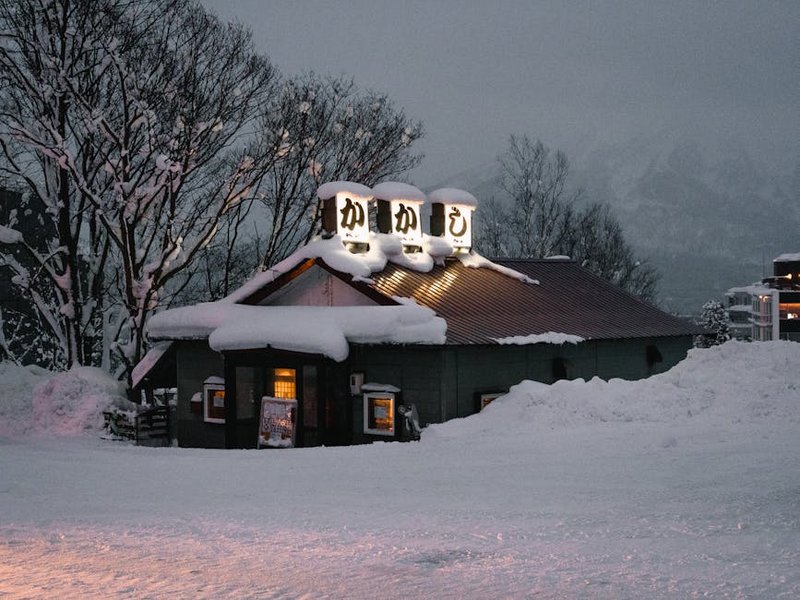Hokkaido Snow Landscapes: Your Ultimate Winter Wonderland Guide
Hokkaido snow landscapes represent some of the most breathtaking winter scenery you’ll ever witness. As Japan’s northernmost island, Hokkaido transforms into a magical winter paradise from December through March, offering unparalleled powder snow, stunning ice formations, and unforgettable snowy adventures. The island’s unique geography and Siberian weather patterns create consistently perfect conditions for winter enthusiasts, photographers, and travelers seeking that picture-perfect snowy escape. Whether you’re dreaming of skiing through pristine powder, soaking in outdoor hot springs surrounded by snow, or simply marveling at frozen waterfalls and snow-covered forests, Hokkaido delivers an extraordinary winter experience that will leave you in awe. The Hokkaido snow landscapes aren’t just beautiful—they’re the backdrop for some of the most memorable winter activities and cultural experiences in all of Asia.
Hokkaido Snow Landscapes Essential Information
Understanding Hokkaido’s winter characteristics is crucial for planning your perfect snow adventure. The island experiences some of the heaviest snowfall in the world, particularly in western regions where cold air from Siberia meets moisture from the Sea of Japan. This creates the famous “Japow” (Japan powder) that attracts skiers and snowboarders globally. Temperatures typically range from -5°C to -15°C (23°F to 5°F), though inland areas can drop much lower. The snow season generally runs from late November to early April, with peak conditions occurring between January and February. What makes Hokkaido snow landscapes particularly special is the quality of the snow—light, dry powder that’s perfect for winter sports and creates that picture-postcard scenery you’ve seen in photographs. The island’s infrastructure is well-prepared for winter conditions, with heated transportation, clear roads, and facilities designed for cold weather comfort.
Geographical Distribution – What You Need to Know
- Western Hokkaido (Niseko, Rusutsu, Kiroro) receives the heaviest snowfall, often exceeding 15 meters annually, creating perfect conditions for skiing and snowboarding
- Central regions (Sapporo, Otaru) offer urban snow experiences with famous events like the Sapporo Snow Festival and beautiful canal scenes
- Eastern Hokkaido (Akan, Shiretoko) features dramatic frozen lakes, drift ice phenomena, and unique wildlife viewing opportunities in snow-covered wilderness
- Budget travelers can manage with $80-120 USD per day by staying in hostels or business hotels, using public transportation, and enjoying convenience store meals and affordable local restaurants
- Mid-range travelers should budget $150-250 USD daily for comfortable hotels, rental car or train passes, ski resort day passes, and nice restaurant meals
- Luxury experiences range from $300-500+ USD per day featuring premium ski-in/ski-out accommodations, fine dining, private guides, and special experiences like helicopter skiing or exclusive onsen resorts
- Japan National Tourism Organization Hokkaido Guide
- Snow Japan Comprehensive Resort Information
Weather Patterns and Preparation
Hokkaido’s winter weather follows predictable patterns that you should understand before visiting. The western side receives consistent snowfall throughout the season, while the eastern regions experience colder but drier conditions. You’ll want to monitor weather forecasts regularly as conditions can change rapidly. The key to enjoying Hokkaido snow landscapes is proper preparation—thermal layers, waterproof outerwear, quality boots, and accessories like gloves, hats, and neck warmers are essential. Despite the cold temperatures, the dry climate often makes it feel more comfortable than humid cold environments. The days are shorter in winter, with sunset around 4:30 PM, so plan your activities accordingly and take advantage of the beautiful winter light during shorter daylight hours.

Hokkaido Snow Landscapes Trip Planning
Planning your Hokkaido winter adventure requires careful consideration of timing, budget, and activities. The island offers diverse experiences ranging from world-class ski resorts to remote onsens (hot springs) surrounded by snow, cultural festivals, and unique winter wildlife encounters. You’ll need to decide whether you want to focus on winter sports, photography, cultural experiences, or a combination of all three. Transportation planning is crucial—while major cities are well-connected by trains and buses, remote areas might require rental cars (with winter tires) or organized tours. Accommodation books up quickly, especially during peak season (January-February) and around major festivals, so advance reservations are highly recommended. Consider spending 7-10 days to fully experience different regions of Hokkaido without feeling rushed.
Best Time to Visit Hokkaido Snow Landscapes
The ideal time for experiencing Hokkaido snow landscapes depends on your specific interests. January and February offer the most reliable powder snow conditions for skiing and snowboarding, with consistent fresh snowfall and fully operational resort facilities. December provides beautiful pre-holiday scenery with fewer crowds, though some facilities might not be fully operational early in the season. March brings longer days and slightly warmer temperatures, perfect for those who find deep winter too cold, though snow quality begins to change toward the end of the month. February specifically hosts the famous Sapporo Snow Festival, drawing millions of visitors to see incredible ice sculptures. For photography enthusiasts, January provides the deepest snow coverage and most dramatic winter scenes, while March offers better light conditions and opportunities for winter wildlife photography.
Budget Planning and Costs
Essential Preparation Checklist
Proper preparation ensures you’ll enjoy rather than endure Hokkaido’s winter conditions. Start with clothing: thermal base layers, insulating mid-layers, and waterproof outer shells are mandatory. Don’t forget accessories like warm gloves, thermal socks, neck warmers, and quality sunglasses or goggles for snow reflection. Footwear should be waterproof with good traction—consider ice cleats for city walking. Technology needs attention too: keep phones and cameras warm as batteries drain quickly in cold weather, and bring portable chargers. For navigation, download offline maps since service can be spotty in mountain areas. If driving, ensure you understand winter driving techniques and have appropriate insurance. Finally, purchase travel insurance that covers winter sports if you plan to ski or snowboard, and check visa requirements for Japan based on your nationality.
Hokkaido Snow Landscapes Top Attractions and Activities
Hokkaido offers an incredible array of winter experiences that showcase its spectacular snow landscapes. Beyond world-famous ski resorts, you’ll find unique cultural events, natural phenomena, and activities that can only be experienced during winter. The Sapporo Snow Festival stands as one of Japan’s most famous winter events, featuring massive ice sculptures and snow installations that attract artists and visitors from around the world. Drift ice tours in the Sea of Okhotsk provide the opportunity to walk on frozen ocean surfaces and observe wildlife like Steller’s sea eagles. Traditional winter festivals in smaller towns offer intimate cultural experiences with local food, performances, and community spirit. For adventure seekers, backcountry skiing, snowmobiling, and ice climbing provide thrilling ways to engage with Hokkaido’s dramatic winter terrain. Each region offers distinct experiences, from the developed resort areas of Niseko to the wilderness experiences in Daisetsuzan National Park.
Must-See Highlights
No visit to Hokkaido’s winter wonderland is complete without experiencing these iconic attractions. The Sapporo Snow Festival (early February) transforms Odori Park into a magical landscape of enormous snow and ice sculptures, complemented by food stalls and evening illuminations. Jigokudani (Hell Valley) in Noboribetsu creates a surreal landscape where steam rises from snow-covered volcanic terrain, best experienced by walking the trails followed by a soak in the therapeutic hot springs. The Otaru Snow Light Path Festival features thousands of lanterns illuminating the historic canal district, creating a romantic atmosphere perfect for evening strolls. Shirogane Blue Pond in Biei takes on an otherworldly appearance when surrounded by snow, with the vibrant blue water contrasting dramatically against white landscapes. Finally, the drift ice of the Sea of Okhotsk provides a unique opportunity to witness and even walk on frozen ocean surfaces, best experienced from Abashiri or Rausu.
Hidden Gems and Local Favorites
Beyond the famous attractions, Hokkaido hides numerous lesser-known treasures that offer authentic winter experiences. Lake Akan’s marimo moss balls become visible through the clear ice, creating unique underwater viewing opportunities at this frozen crater lake. The Sounkyo Ice Festival features elaborate ice sculptures in a dramatic gorge setting, with fewer crowds than Sapporo’s larger event. Local onsens like Toya Lake’s waterside hot springs provide breathtaking views of snow-covered landscapes while you soak in therapeutic waters. The historical village of Shimukappu offers traditional winter experiences like ice fishing and snowshoeing without the resort crowds. For photography enthusiasts, the frozen waterfalls of Daisetsuzan National Park create spectacular ice formations that change throughout the winter. These hidden gems allow you to experience Hokkaido’s winter magic without the crowds, often with more personal and authentic interactions with local culture and nature.
Hokkaido Snow Landscapes Practical Travel Information
Navigating Hokkaido during winter requires understanding the transportation options, accommodation types, and practical considerations for cold weather travel. The island is well-connected by air through New Chitose Airport near Sapporo, which receives international and domestic flights. Once arrived, the JR Hokkaido rail network connects major cities, though some rural areas require buses or rental cars. Winter driving demands caution and preparation—rental cars come with mandatory winter tires, but you should understand how to handle snow conditions. Accommodation ranges from western-style hotels in cities to traditional ryokans (Japanese inns) with onsens, and ski resort accommodations that offer slope-side convenience. Language barriers are minimal in tourist areas, though learning basic Japanese phrases enhances your experience. Currency and payments are straightforward—credit cards are widely accepted, though carrying some cash is advisable for rural areas and small establishments.
| Category | Options/Features | Price Range (USD) |
|---|---|---|
| Ski Resort Accommodation | Ski-in/ski-out convenience, equipment rental, on-site dining | $200-500/night |
| City Hotels | Central locations, public transport access, restaurant options | $80-200/night |
| Traditional Ryokan | Japanese-style rooms, kaiseki meals, private onsens | $150-400/night |
| Budget Accommodation | Hostels, business hotels, capsule hotels | $40-100/night |


